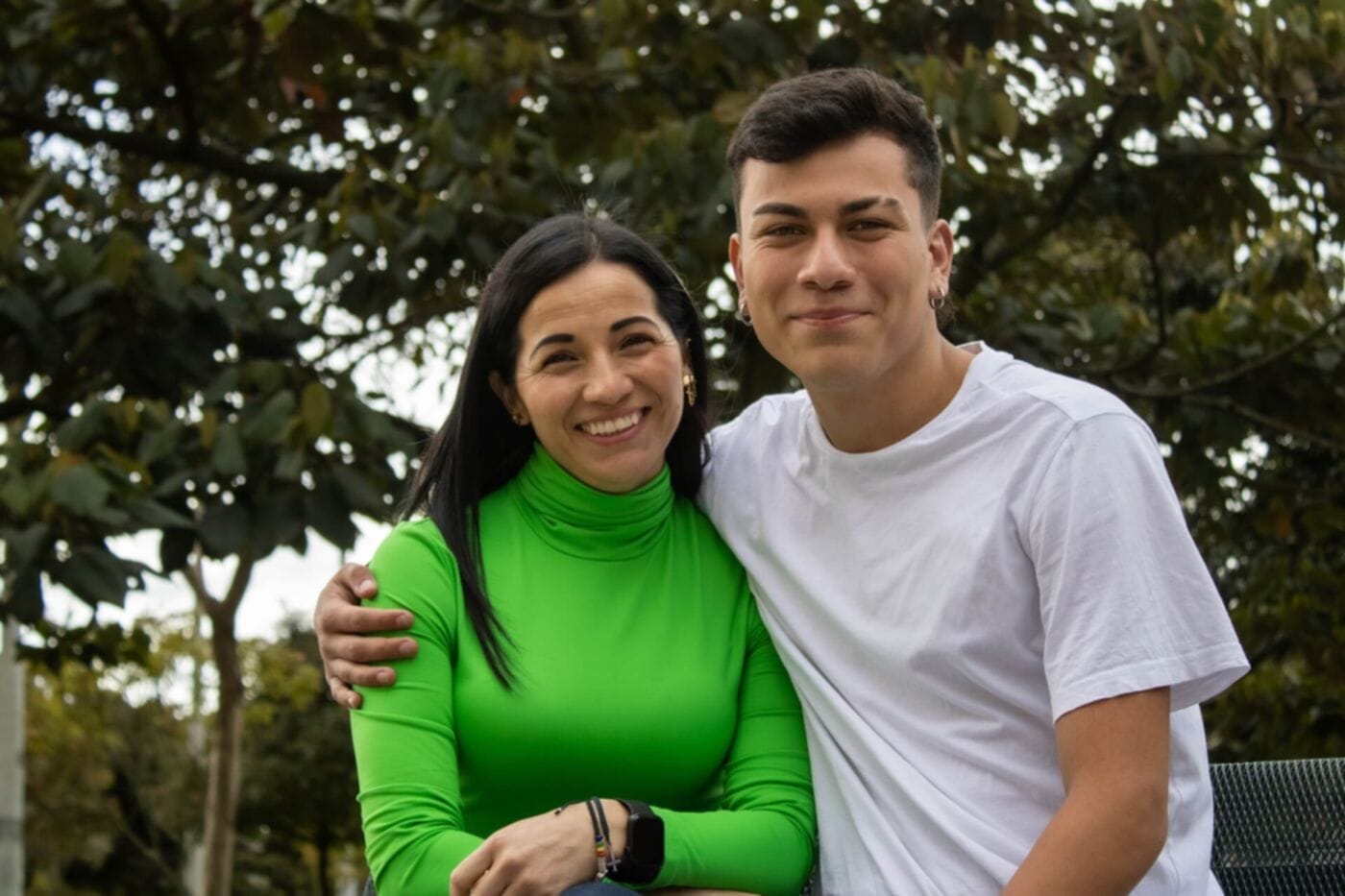So, what do green flags look like? Why do they matter so much? Let’s find out in this article.
What Are Green Flags in a Relationship?
In a relationship, a green flag is something positive. Looking for green flags means that you’re looking out for signs that your partner respects you and vice versa, for example. You want to be able to conclude that as partners, you have enough emotional security with one another. A green flag would be an indicator of that.
If you’re looking for big, reassuring gestures, it can be hard to spot green flags in your relationship. You might have to look at consistent, quiet habits or patterns of behavior in conflict resolution or communication to spot them properly.
Believe it or not, you’ve been looking out for green flags since you’ve met your partner. The first date can be jittery, but your mind is spotting green flags while it’s happening.
Did you notice how they were on time for your date, groomed, and dressed well? Then you have multiple green flags: personal responsibility, respect, and effort.
Green flags are useful in early dating. Before you go any further into a relationship with a person, at the very least, green flags are there to reassure you you’re still on the right path. Green flags aren’t just about the relationship or the other person – it’s also about you and keeping you safe.
So, it’s important and useful to look out for green flags when dating someone new. Does it change when you’re in a long-term relationship?
Why They Matter in Long-Term Relationships
In the long run, green flags matter just as much – if not more.
Long-term relationships go through a lot of challenges. Time passes by, and life changes as it does. Careers may change, families demand more responsibilities, children might now be in the picture, and health can decline. Due to everything that can happen, a long-term relationship can become unpredictable, too.
As a result, both partners are challenged, both individually and together, by life circumstances.
As the relationship evolves, it becomes more important to be able to spot green flags. As a matter of fact, it can be the green flags that hold everything together during times of stress. When conflict creeps in, one green flag to look for is healthy, open communication.
That way, any problem that pops up becomes something to work through.
When a partner starts to become more occupied with their career, another green flag to look for is how they manage their time with the needs of a relationship. Do they choose to spend time when they can? What kinds of effort do they put in to reach an agreed-upon compromise? Do they choose to be affectionate and keep things intimate despite the lack of time?
All of these questions can point you to a partner’s empathy and vulnerability as their green flags. They can help with avoiding resentment and jealousy, and keep the relationship in a healthy shape.
In this way, green flags go beyond just markers of compatibility. They’re the things you look for to sustain love in the long run.
10 Green Flags in Relationships
So, what are green flags in relationships you should look out for?
#1 Trust
Trust is our first green flag because it is the very foundation of any relationship. Without trust, a relationship can fall apart. You need to be able to believe in your partner and their decisions.
Trust, as a green flag, can show up as the allowance of agency in the relationship.
Do you and your partner allow for agency? For example, this can mean time apart or plans made without the other not being an issue. Trust allows a relationship to have this agency in a healthy manner.
At the same time, you can gauge if you have trust in the relationship if there’s a lack of assumptions. Even when your partner unexpectedly comes home late, for example, there’s enough good faith to ask what happened first than accuse of wrongdoing right away.
#2 Honesty
Second of all, we have honesty.
One way to spot this is to reflect on your communication in the relationship. It’s ideal that while some things may remain private, nothing is ever hidden between partners.
Honestly doesn’t just mean telling the truth. It also means that there must be no lies of omission. There are no questions dodged – just transparency and integrity.
If your partner can deliver a message that might hurt to hear but is necessary for you to know, they’re an honest partner. This means they’re willing to do right by you, and can stand by you, too.
#3 Open Communication
Speaking of honesty, we have the next green flag: open communication. Honesty is an important part of open communication, but it isn’t the only element.
Beyond truthfulness, open communication also means that conflict is addressed instead of avoided. Communication is key to how it’s addressed. Just because it's a conflict doesn’t mean it has to be an argument. Open communication can make sure it remains a conversation filled with love and respect still.
Take a look at how you and your partner address difficult conversations. Do you avoid hard conversations, or is there direct, transparent, but caring communication involved?
#4 Emotional Support
When you have conflicts in the relationship or outside of it, it’s also important to have emotional support.
When you need an ear to listen to you, does your partner willingly give it? Is there enough space for you to have your own emotions and process through them with your partner?
Emotional support can manifest in different ways. Sometimes, it can simply look like having a shoulder to cry on. Or it can look like your partner picking up more of the chores when you’re emotionally wrung out.
#5 Boundaries
In any relationship, boundaries are an important element. This is especially the case for your romantic ones.
Just because we love a person doesn’t mean we allow them to do anything and everything to us. We have boundaries on what’s okay, and what’s not.
This can follow you and your partner through your everyday lives. For example, a relationship may hold a boundary that they respect each other’s privacy. There should be no snooping on each other’s phones or journals.
An important part of this green flag is mutual agreement. Boundaries are created together. Instead of a boundary meaning restriction, it can signal mutual respect.
#6 Conflict Resolution
We’ve mentioned having conflicts in the relationship multiple times. While the other green flags can help, conflict resolution is a skill and a green flag on its own.
When disagreements happen and emotions run high, how do both partners react?
It’s important to arrive at safety when in conflict. For example, in your arguments, there are no hurtful words exchanged, or signs of escalation happening.
In fact, it’s better to fight the problem as a team, and not fight against each other.
#7 Consistency
Another sign of a healthy relationship is consistency. When you have consistency, you have both partners showing up for each other enough that it can be relied on.
There isn’t any second-guessing here. Consistency means that promises are acted upon, intentions are followed through, and they remain present no matter what. If your partner premises to be more understanding, they should be following through no matter the disagreement!
As a result of continued consistency, you actually reap the benefits of having more green flags pop up. When consistency is practiced, there’s more trust, honesty, and emotional support.
#8 Vulnerability
A good, healthy relationship doesn’t shy away from vulnerability.
Vulnerability requires emotional honesty. Mistakes are admitted, and needs and fears are out in the open. Your partner might be mad at you coming home late, for example, but vulnerability is employed when they eventually say they’re scared of losing you.
Even when it’s hard to employ it, having vulnerability in a relationship builds better emotional intimacy. In the long run, vulnerability contributes to a good relationship.
#9 Empathy
Empathy, as a green flag, is one of the clearest signs of a healthy relationship.
When your partner empathizes with you, they put themselves in your shoes. No matter how complicated your feelings may be, they have an understanding of it.
If they can’t exactly understand your problems at work, as an example, at the very least, they validate how you feel. You’re able to have your own emotions, and they’re able to look into why you feel a certain way.
Even when you disagree on things, empathy allows for compassion.
#10 Mutual Growth
Finally, we have mutual growth.
A relationship shouldn’t just feel good. It should also challenge you to be a better person.
In a healthy relationship, it’s a good sign if both partners grow together – emotionally and mentally. Have you increased your interests and skills while with your partner? Do you feel as if you’ve grown as a person?
In action, mutual growth looks like conflicts and disagreements that are learned from, not swept under the rug. Both partners learn how to show up and love each other better.
All in all, every green flag we mentioned must lead to mutual growth.
Green Flags vs Red and Beige Flags
If there are green flags in a relationship, there are also red and beige flags.
What are Red Flags?
Relationship red flags are warning signs and negative patterns. Their existence doesn’t mean your relationship is all bad and doomed to fail. It simply means there are things to work on.
At the very least, relationship red flags shouldn’t be ignored.
What are some examples of red flags in a relationship? Well, think about conflict in your relationship. Was there ever a time you or your partner denied or undervalued the other’s emotions?
Were there ever any mentions of overreaction? If so, emotional invalidation might have happened, and that’s a red flag. It signals the absence of empathy, compassion, and emotional support.
At the same time, the existence of volatility is a red flag. Always having major outbursts or frequent arguments point to something unstable in the relationship.
What Are Beige Flags?
If there are green flags and red flags in a relationship, we also have beige flags.
Relationship beige flags are distinct because they are just neutral signs. They don’t determine the state of the relationship. They aren’t wholly bad or good, but these are signs that might make you hesitate to date further.
Beige flags indicate that there’s still something to find out or work on, but they aren’t big warning signs like relationship red flags are.
For example, someone may be neutral at just about everything. If you ask them about politics, they’re neutral. If you ask them about their opinion on a certain issue, they’re still neutral. There’s no evidence of strong likes or dislikes.
While this isn’t really a bad thing, it will make you question things. What does this person actually like? What are their true feelings? Are they choosing to hide something for some reason?
Only time will be able to tell. Or, you might find that to be a reason to exit the relationship.
To make it easier, here’s a side-by-side comparison:
Beige Flags
- Neither positive nor negative as signs
- May be simple personality quirks
- May evolve into becoming a red or green flag
- Can reflect emotional unavailability
Green Flags
- Positive signs during the course of the relationship
- Reinforces stability, safety, and security
- Can build the foundation of a strong and healthy relationship
Red Flags
- Warning signs during the course of the relationship
- May lead to potential harm or toxicity
- May require intervention, such as a conversation or a pause from the relationship
Conclusion
Green flags are a good way to track your relationship’s health and progress. Some relationship green flags may not be included here – green flags aren’t static, after all. Relationship green flags can change and manifest as different things over time.
As you and your partner navigate your relationship together, it’s important to not just notice the green flags, but to do what you can to cultivate them. This way, green flags will always exist, and neutralize whatever red flags you may have in the relationship.
FAQS
What Should I Do When There Are Red Flags in the Relationship?
Finding red flags doesn’t necessarily mean it’s the end of your relationship. However, you should take some time to pause. What kinds of behavior are you noticing? How does it reflect deeper harm? What do you think you can do now?
Know that red flags can be just about incompatibility, or they could signal deeper issues in the relationship. If it feels safe for you to do so, try to communicate with your partner about it.
Can Beige Flags Become Green Flags?
Beige flags can become green flags over some time. For example, one beige flag you might find them to have is leading a boring routine that they keep following no matter what.
While it may seem like a beige flag at first, it can turn into a green flag when you realize that their routines signal stability. It could be a grounding presence to have in your life.
How do I Spot Beige Flags?
It’s common to have beige flags during dating. To spot them, ask yourself if you’ve ever noticed patterns or behavior that don't exactly make sense. They may be quirks, vague responses, or confusing actions that don’t really warn you of negative behavior. They just bring up curiosity.
You’re probably dealing with a beige flag then!
How Do I Spot Green Flags?
Green flags in a relationship can be hard to find at first.
Choose to observe how you and your partner feel and act towards one another. If a certain trait or pattern is consistent, then that means you have that green flag in your relationship. For example, if you and your partner are consistently honest and transparent, then that’s definitely a positive sign.
How Do I Maintain Green Flags?
Like everything, green flags need to be nurtured.
If you’ve started to notice and spot the green flags in your relationship, then you’re off to a good start. The next thing to do is to act on them. Keep reinforcing whatever good trait or pattern you have in your relationship. This way, your relationship stays strong over time.












